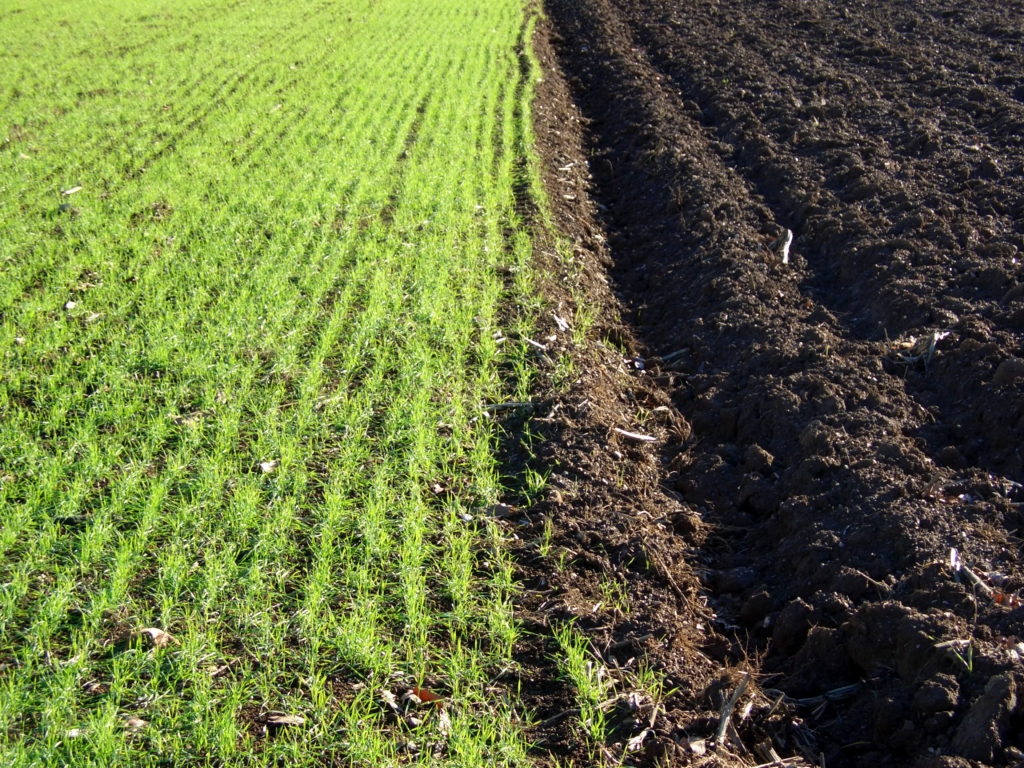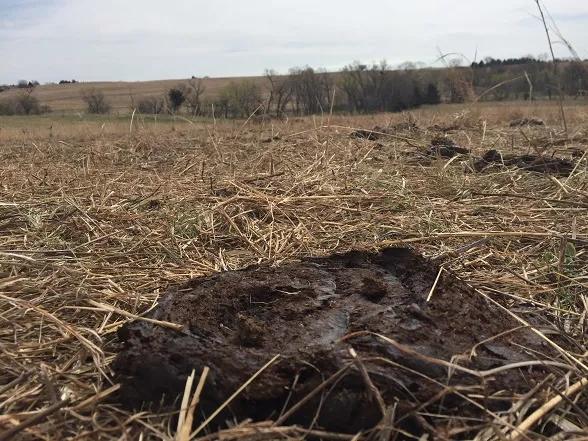By Erhard Hennig
Humus forms as a result of the complicated interplay between inorganic conversions and organic creatures such as microbes, nematodes, and earthworms. Humus formation is carried out in two steps. First, the organic substances and minerals in the soil disintegrate. Next, totally new combinations of these broken-down products develop. This leads to the initial stages of humus. Humus formation is a biological process. Only 4-12 inches (10-30 centimeters) of humus-containing soil are available in the Earth’s upper crust. This thin layer of earth is all that exists to provide nutrition to all human life. The destiny of mankind depends on these 12 inches!
Humus Formation
Cultivated soils with 2 percent humus content are today considered high-quality farmland. What makes up the remaining 98 percent? Depending on the soil type, organisms contribute about 8 percent, the remains of plants and animals about 5 percent, and air and water around 15 percent.
The other 70 percent of soil mass is thus of purely mineral origin. The mineral part of the soil results from the decomposition and erosion of rock. The dissolution of these components is carried out by organisms called lithobionts, which are the mediators between stone and life. Raoul H. Francé coined the term “lithobiont,” which means “those who live on stone.” Lithobionts are the group of microbes that begin the formation of humus. They produce a life-giving substance from the nonliving mineral. On the basis of this process, living matter, earth, plants, animals, and human beings can begin, step by step, to build.

Only soils with optimal structural tilth have a humus content of 8-10 percent. Untouched soils in primeval forests can at best reach 20 percent. A tropical jungle can’t use up all its organic waste, so it can store humus. All forests accumulate humus, but real humus stores only emerge over the course of millennia. Once upon a time, accumulations of humus known as chernozem (Russian for black earth) could be found in the Ukraine.
Almost all plant communities (except for leguminous plants and untouched forests) use up more humus than they can produce. Strictly speaking, each harvest and each growth of cultivated plants is accompanied by a loss of humus. The lost humus cannot be replaced by any kind of mineral fertilizer. Both deciduous woods and mixed forests can provide their own humus because they are able to make use of their own discarded leaves. Even in nature, without human influence, humus is only produced in deciduous forests and on undisturbed land.
Humus and Manure
Humus is favorably disposed toward the vegetable rather than the animal metabolism. This is why manure, with its high proportion of animal excrement, cannot support natural humus formation. Manure has to be turned into humus before it can be used for fertilization.

Why is this? The microbes living in the soil are more favorably disposed toward the decomposition of pure cellulose than the disintegration of animal excrement, which leaves the intestines in an anaerobic state. This fact was unfortunately not recognized by earlier generations.
Rather than being subjected to aerobic decomposition, manure was simply buried in the field. When introduced to the soil in this way, rotting anaerobic matter remains as an alien element for quite a long time. The manure is disintegrated by specific rot microbes, whereas the microbes inherent to the soil — living under aerobic conditions — are driven out. The question of whether anaerobic or aerobic microbes predominate, and therefore whether rot or decomposition occurs, is crucial for the health of the plants.
The following example reveals how little humus is produced when manure is used: if a dose of 400 quintals (roughly 88,000 pounds) of stable manure is applied to each hectare of soil (on light soils), after half a year, half of the amount of the manure can be found; after one year, only a fifth; and after two years, practically nothing of the manure is left. The organic matter in the soil is quickly consumed and assimilated; it is then mineralized without the production of humus.
Typical manure cultivation has been practiced in Germany for the last 200 years. If manure cultivation were effective, German soils would be very rich in humus. But this isn’t the case. Manure is only the remains of the substances that served the animal as nutrition. All the highly nutritive proteins, carbohydrates, fats, and so on that were produced by the plant have been taken away from the soil, and what remains is poor in nutrients.
In spite of these shortcomings, the custom of manure spreading is still widely practiced. Here is an example: several years ago a renowned child specialist wanted to find out whether the quality of vegetables grown for babies and young children was influenced by fertilization. How did he go about it? He tested the influence of: a) only manure; and b) manure plus mineral fertilizer. The result: the vegetables fertilized exclusively with manure proved not only inferior, but actually dangerous for human health — many of the children in this group were diagnosed with hypochromic anemia. The report about the influence of stable manure on the quality of vegetables even referred to humus-fertilized soils. Such misinformed ideas about humus are still common. Researchers apparently failed to notice that manure is a rot product that contains poisonous substances like indole, skatole, putrescine, and toxic phenols, and that the quality of manured soil is bound to be toxic.
What is Humus?
The question, “What is humus?” is not easy to answer. A German layman, if asked, would probably check the Brockhaus Encyclopedia for an answer. There he would find the following definition: “Humus, black-brown matter in the topsoil, is produced by the putrefaction of vegetable and animal matter. Humus is rich in carbon and is generally acidic as a result of its humic acid content. It increases the water storage potential of the soil and produces carbonic acid, which disintegrates minerals.”

Even though this statement is quite basic, one can glean from it some important functions of humus. We know today that plant remains decompose down to their most basic components and plasma residues. Only after the total disintegration of all substances into the elements carbon, nitrogen, potassium, phosphorus, and magnesium can construction begin on what today is generally called humus.
Researchers have proven that plants can receive the final forms of plasma (matter that is not decomposed to the state of mineralization) up to a certain molecular weight. This plasma is then included in their systems. This brings us back to the cycle of living substances, which we have already mentioned above.
Humus cannot be regarded as a real substance but rather as a process — a formation — built from a multitude of constantly changing factors. In order to define humus, the living substance factor has to be taken into consideration. The law of harmony — that is, the law of balance — reigns over all living things. We know all too well the consequences of a disturbed harmony in the soil, this harmony being the precondition for a normal soil life. One could also say, “Harmony equals balance through well-functioning regulative systems in the soil.”
Humus and soil are subject to the same laws as all other living things. But modern agriculture refuses to work in the same way, and the results of ignoring these laws can be seen in our ailing fields with their depleted soils and damaged structures, and in our disease-prone cultivated plants. Dead soils eventually become barren desert land.
Until recently, humus could not be analyzed using the usual chemical methods. Acids, bases, and salts had to be used for chemical investigations, but those substances destroy life and its functions. Incineration did not reveal anything about the structure or the capillary system of the former humus. Without knowledge of this capillary system, nothing would have been discovered about the organisms, how they related to each other, and the harmony in which they worked.
We can discern one key to determining the value of humus from the relationship between carbon and nitrogen. Highly fertile soils should show a carbon/nitrogen relationship of 10:1. Biological investigations, however, are far more interesting because they refer to the living milieu, and in order to form an idea of the world of little creatures one has to study the symbiosis of the living communities.
The Clay-Humus Complex
Even with the above factors, the definition of humus has not yet been exhausted. In this “primitive tissue,” colloids — the very finest soil particles — play a particularly important role. In humus, different nutrients are bound together with clay minerals through adsorption processes. This association of organic fragments such as humic substances with inorganic particles such as clay minerals is usually called the “clay-humus complex.”
Without minerals, a true humus formation would not be possible. Clay and humus colloids are able, mainly due to their electronegative properties, to take up the bases present in the soil, hold them tight, and absorb them. Clay and humus are thus generally referred to as an adsorption complex.
Humus as the clay-humus complex — in other words, as the living organic matter in the soil — also has a buffering effect. Nutrients are only given to the plant if they are required, so an overdose is impossible. However, plants growing on soils lacking in humus take in more nutrients than are needed for the accumulation of plant matter when mineral fertilization occurs. Because organic fertilization prevents superfluous consumption, it can be seen as an energy-saving measure.
We should bear in mind that humus (which our ancestors referred to as the “Primeval Force” of soil) is not matter according to most recent knowledge, but a biological performance. This performance is typical of Mother Earth, and such performances cannot be found anywhere else.
Editor’s Note: This is an excerpt from Secrets of Fertile Soils: Humus as the Guardian of the Fundamentals of Natural Life, published by Acres U.S.A. For more information, visit www.acresusa.com.
